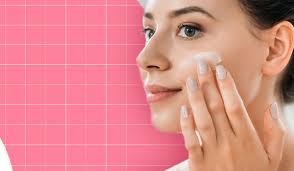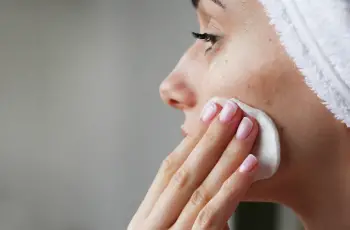
How to Use Retinol in Your Acne Routine: The Complete Guide to Clearer, Healthier Skin
Retinol, a derivative of vitamin A, has earned a cult status in the skincare world for its ability to address acne, fine lines, uneven texture, and overall skin clarity.
This powerhouse ingredient works below the skin’s surface to increase cell turnover, unclog pores, and reduce breakouts while also helping improve tone and smooth texture.
Although many think retinol is a new trend, it was first patented in 1967 as an acne treatment by dermatologists, making it a trusted option for over half a century.
Its ability to promote healthy skin regeneration and fight breakouts from within has made it a go-to solution for those struggling with persistent or hormonal acne.
When used correctly and consistently, retinol can make a dramatic difference in acne-prone skin—but it needs to be introduced slowly and used with care.
In this guide, you’ll learn exactly how to use retinol in your acne routine safely and effectively, minimizing irritation while maximizing visible results.
Whether you’re brand new to retinol or looking to refine your skincare approach, we’ve got you covered with every tip and detail you need.
What Is Retinol and Why Does It Work for Acne?
Retinol is a type of retinoid, which refers to a group of vitamin A derivatives that influence skin cell behavior and are commonly used to treat acne and aging.
Unlike exfoliants like salicylic acid or benzoyl peroxide that work on the skin’s surface, retinol penetrates deeper into the skin to promote renewal at a cellular level.
It binds to receptors in the skin that regulate functions such as collagen production, oil regulation, and the removal of dead skin cells.
This makes retinol especially useful for unclogging pores, preventing breakouts, reducing blackheads, and fading post-acne marks or discoloration.
Because of its deep-reaching action, it’s often used in skincare routines to address both active breakouts and long-term acne scars.
Retinol also contains antioxidant properties, helping the skin defend itself from environmental damage like pollution and UV-related free radicals.
How to Use Retinol in a Skincare Routine for Acne
When adding retinol to your acne skincare routine, the most important rule to follow is to go slow and steady to avoid overwhelming your skin.
Retinol is a potent ingredient, and jumping in too fast can lead to redness, dryness, flaking, and a reaction known as retinization or “the purge.”
Here’s how to incorporate retinol into your routine step by step, especially if you’re using it to target acne-prone skin.
Start With a Low Percentage
Begin with a retinol product that contains 0.25% to 0.5% concentration—this allows your skin to adapt to the active ingredient with minimal irritation.
Over-the-counter retinol typically ranges from 0.25% to 1%, while prescription formulas like tretinoin are stronger and should be used with medical guidance.
Apply Retinol at Night Only
Retinol breaks down quickly in sunlight, which reduces its effectiveness and may increase skin sensitivity, so always apply it during your evening routine.
Use It Once a Week at First
Introduce retinol once a week for the first two weeks, then gradually increase to twice a week, and eventually every other night as your skin builds tolerance.
Consistency is key, but rushing the process can result in peeling, burning, or increased breakouts due to overstimulated skin.
Avoid Sensitive Areas
Keep retinol away from the delicate skin around your eyes, mouth, and neck—these areas are thinner and more prone to irritation.
You can apply a small amount of moisturizer on those areas before retinol as a buffer to protect them from potential contact.
Moisturize Generously
Always follow retinol with a nourishing moisturizer to hydrate the skin, support the barrier, and reduce the risk of dryness or flaking.
If your skin is very sensitive, you can even apply your moisturizer before the retinol in a method known as the “sandwich technique.”
Always Wear SPF the Next Morning
Because retinol increases skin sensitivity to sunlight, wearing a broad-spectrum sunscreen with SPF 30 or higher every day is absolutely essential.
Even on cloudy days or if you’re indoors most of the day, UV rays can still cause damage, especially when your skin is freshly exfoliated from retinol use.
Avoid Mixing With Harsh Actives
Don’t layer retinol with exfoliating acids like glycolic acid or salicylic acid, as the combination can cause irritation and damage the skin barrier.
Instead, space these ingredients out across different days or alternate evenings if your skin can tolerate them.
Consult a Dermatologist If Needed
If you’re unsure whether your skin can handle retinol or if over-the-counter products aren’t effective, consult a dermatologist for guidance or a prescription formula.
They can recommend the right strength and provide advice tailored to your specific acne concerns and skin type.
Benefits of Using Retinol for Acne
Retinol targets acne from deep within the skin, providing long-term results that go beyond surface-level spot treatments.
Here are the top benefits of retinol in an acne-focused skincare routine:
Clears Pores: Retinol unclogs pores by speeding up cell turnover, which helps prevent blackheads, whiteheads, and future breakouts.
Reduces Inflammation: It calms redness and inflammation associated with acne, creating a more even, less irritated complexion over time.
Fades Acne Scars: Retinol improves skin tone and texture, fading post-inflammatory hyperpigmentation (PIH) and minimizing leftover acne scars.
Regulates Oil Production: It helps balance excess sebum, which is a key contributor to acne, especially in oily or hormonal skin types.
Boosts Collagen: By stimulating collagen production, retinol strengthens the skin, smooths rough texture, and shrinks the appearance of enlarged pores.
Protects Against Environmental Damage: Its antioxidant action supports skin resilience, defending it from oxidative stress caused by pollution or UV rays.
Can You Use Retinol on Open Acne or Active Breakouts?
Yes, you can apply retinol on open or active acne as long as your skin has already built some tolerance to the ingredient and you’re using it appropriately.
It might sting slightly when applied over broken skin, but this reaction is usually mild and temporary if you’re using the right concentration.
Keep in mind that retinol is not a spot treatment—it works over time by preventing future breakouts and improving skin function long-term.
Even if you don’t see overnight results, consistent use will reduce the frequency and severity of acne flare-ups over the following weeks.
Do You Apply Retinol Before or After Moisturizer?
Retinol should be applied after cleansing and before moisturizer if it’s in a serum or lightweight cream format, which allows it to penetrate effectively.
If your skin is dry or easily irritated, apply moisturizer first to create a buffer layer that softens the potency of the retinol and reduces the risk of dryness.
The general rule for layering skincare is to apply from thinnest to thickest texture—start with water-based products and end with heavier creams or oils.
How Long Does It Take for Retinol to Clear Acne?
On average, it takes about 6 weeks of consistent use to begin seeing visible results, with full improvement often appearing after 10 to 12 weeks.
This timeline depends on the concentration, the frequency of use, and your skin’s overall condition at the start of treatment.
While it may feel slow at first, patience is crucial—retinol works gradually to reset your skin’s behavior and reduce future breakouts.
Using it 2–3 times a week yields faster results than once-weekly use, but be careful not to overuse it, which can set back your progress.
Can Retinol Make Acne Worse Before It Gets Better?
Yes, some people experience a “purging phase” when starting retinol, where breakouts seem to worsen slightly before improving.
This happens as the ingredient speeds up cell turnover and pushes existing blockages to the surface, causing temporary breakouts.
The purge typically lasts 2–4 weeks and resolves as your skin adjusts, revealing clearer, more stable skin afterward.
If your breakouts last longer or are getting more severe, it may not be purging—it could be irritation, or your product may not suit your skin type.
Final Thoughts: Mastering Retinol for Acne-Prone Skin
Retinol is a tried-and-true ingredient that has been clearing acne and transforming skin texture for decades—and it’s not just hype, it’s science.
With the right introduction, consistent application, and proper layering techniques, retinol can dramatically improve your acne and overall skin health.
Remember to go slow, hydrate often, and always wear SPF to protect your skin and prevent setbacks during your retinol journey.
If you’re still unsure or want personalized guidance, consult a dermatologist who can help you choose the right formula and routine.
Your skin deserves patience, care, and the right ingredients—retinol can be the game-changer you’ve been looking for when used thoughtfully and consistently.


